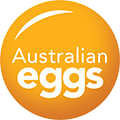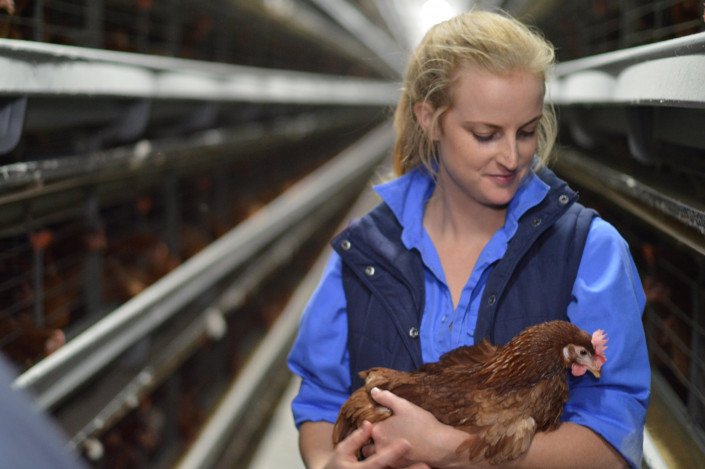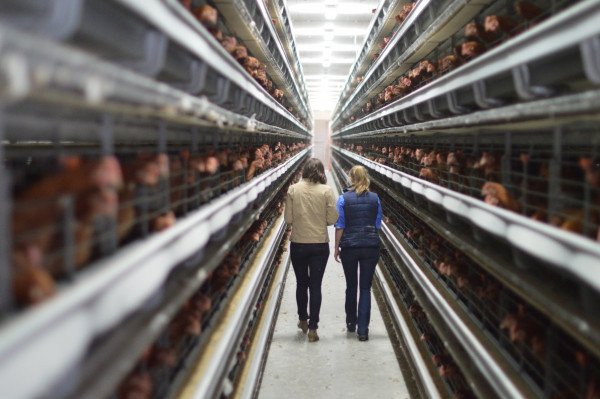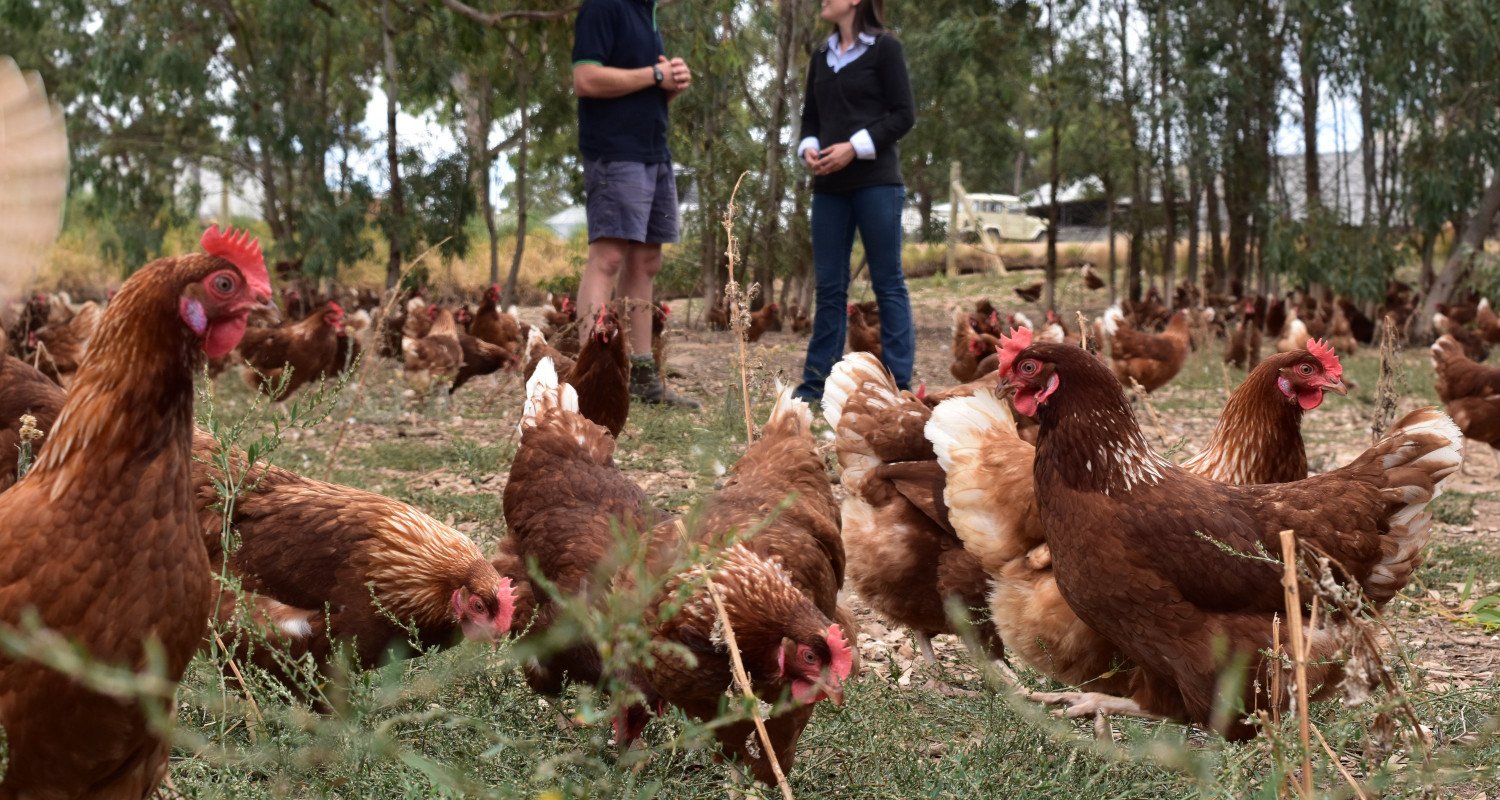
Hen Welfare & Cage Eggs
Poached, scrambled, fried or in your favourite dessert, we Aussies love our eggs. We consume more than 17 million eggs every day and Australian egg farmers work around the clock to supply a range of eggs for everyone.
Our taste for eggs has been steadily growing, but not just for any eggs. Consumer demand for free range eggs has risen over the 10 years, however, cage eggs remain an important and affordable option for many Australians. Without them, there just won't be enough eggs to go around.
With more than $0.5 billion invested over the last 10 years to improve cage egg standards, Australia's current cage egg farms are a healthier and happier place for hens.
Separate fact from fiction and learn the truth about Australia's cage production systems.

MEET AUSTRALIAN EGG FARMERS John Sattler
Australian egg farmers care for their hens. It's not just a job, but also their passion and their livelihood.
Australian Egg farmers carefully monitor the health of their flock to provide care to their animals when they need them most. No matter the size of the farm, farmers know the importance of looking after their animals.
Meet John Sattler, a livestock manager from Tasmania who cares for hens in free range and cage production system.
What Are Cage Eggs?
Cage eggs make up 40% of supermarket egg purchases in Australia. Cage eggs are produced from hens that are housed in cages inside large, climate-controlled sheds.
Cage egg farming began about 50 years ago in response to the fast-growing demand for eggs and the need to lower the unacceptably high disease and mortality rates in free range hens. Moving hens indoors not only protected them from the elements and potential predators but also parasites and disease-causing pathogens such as avian influenza.

The cages that house hens have been upgraded a number of times in the decades since then and the modern cage farming system used today is clean, automated and highly efficient. Modern sheds include automated feeding, watering, climate control kept at 23°C, ventilation, lighting, and manure and egg collection. This highly efficient system enables farmers to optimise conditions for the health of the birds and produce eggs at a relatively low cost.
Want to see a cage egg farm for yourself? Australian Eggs invites you to take an inside look at a cage egg farm in the video below.
The advantages and disadvantages of Cage Egg Farming
Every egg production system in Australia, whether cage, free range, or barn-laid, has its advantages and disadvantages and there are trade-offs between different and sometimes conflicting measures of animal welfare. For example, increased freedom for hens to exhibit natural behaviours can expose them to greater risks in outdoor environments.
Some of the benefits and disadvantages of cage egg farming include:
| Benefits | Disadvantages |
| Hens rarely get sick and have lower rates of mortality due to the controlled cage environment. It’s also easier for farmers to identify and treat sick hens as they are housed in smaller groups. | Hens in cage systems have reduced social interaction with other hens. |
| Cage hens avoid injury from in-fighting within the flock as smaller groups of five or six per cage means the birds are able to establish a stable pecking order. | Cage hens are unable to roam and explore as they are confined to a relatively small space. |
| Cage eggs have a lower carbon footprint than free range eggs. | In most cage farms, the hens are unable to practice some natural behaviours like nesting and dust-bathing. |
| There is less need for veterinary medications in cage systems. | Cage hens are generally unable to perch, which leads to lower bone strength. |
| Cage hens are protected from predators such as foxes, feral cats and birds of prey. | |
| There are fewer occurrences of manure-borne diseases, parasites and other exotic diseases. |
While egg farmers use three main farming systems to manage animal welfare, research consistently shows the biggest factor influencing welfare is the quality of farm management and how the hen is cared for.
Some of the images of cage egg farming on the internet show hens in awful living conditions but most of the photos are decades old and many are not from Australian farms. The Australian egg industry has invested half a billion dollars in upgrading the design of cages over the last two decades to improve hen living conditions.
How Do Egg Farmers Look After Their Hens?
Healthy, happy hens lay more and produce better quality eggs.
So naturally, it's in our farmer's best interests to provide the best care to their hens.
Egg farmers carefully monitor and take steps to ensure the health and welfare of their hens, including:
- Farmers undertake various biosecurity & hygiene measures to limit the introduction and spread of infectious diseases and pests.
- Hens are given a controlled, balanced and nutritious diet that provides the nutrients needed to produce eggs and help prevent disease.
- Housing, temperature control, lighting, protection and health care are provided to ensure the safety and wellbeing of hens.
- Modern egg farmers are trained to vaccinate their hens against disease.
- Farm protection programs are designed to lower the risk of disease, contamination and predators.
Read more about what the egg industry is doing to support hen welfare on farms.
Are Cage Eggs Less Nutritious?
Eggs have one of the highest nutrient-to-kilojoule ratios of any food source, containing a high percentage of vitamins and minerals. Importantly, the nutritional value of eggs remains consistent, regardless of whether they are cage, barn-laid, or free range as all hens are fed a grain-based diet.
Cage eggs are the cleanest of the three farming systems as the cages tilt gently backwards so the eggs roll away onto an automatic belt as soon as they are laid. This reduces the need for egg washing and sanitisation.
Learn More About Egg Farming
Curious about egg farming? Learn more about cage eggs, free range eggs and barn-laid eggs with Australian Eggs. Or find out everything you’ve ever wondered about egg farming.
More Farming

What Are Cage Eggs?
Cage eggs make up 40 percent of supermarket egg purchases in Australia. Cage eggs are produced from hens that are housed in cages inside large, climate-controlled sheds.

What Are Free Range Eggs?
Demand for free range eggs has grown significantly in Australia over the last 15 years and egg farmers have responded by investing in increased free range egg farming capacity. Free range is now the most popular egg category at the supermarket, making up 47 percent of total retail sales.

What Are Barn-Laid Eggs?
Barn-laid eggs, sometimes also called cage-free eggs, are produced in a farming system that allows the hens to wander freely within a shed. Barn-laid eggs make up 10 percent of supermarket egg purchases in Australia.

The Good Egg Podcast
Every day, Australians tuck into millions of eggs. They come from all sorts of egg farms across the country—big, small, free range, barn-laid, caged. In this podcast, explore the living conditions of egg-laying hens around Australia with journalist Wendy Hargreaves, and hear from farmers and experts about the many different factors we need to consider when trying to make ethical decisions about eggs.
 >
> 


